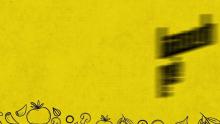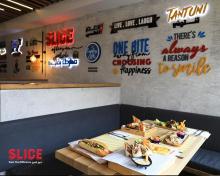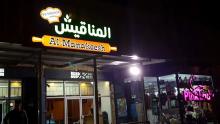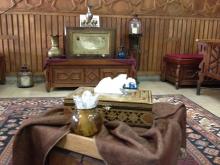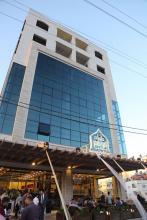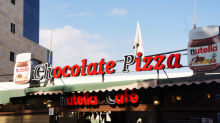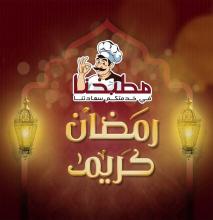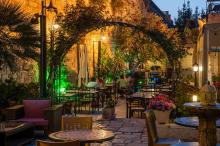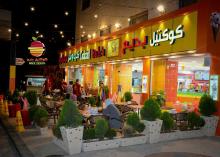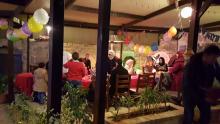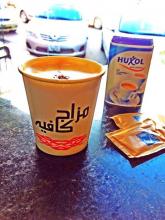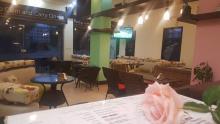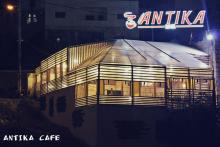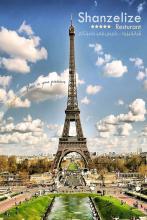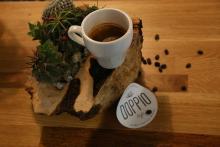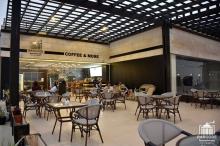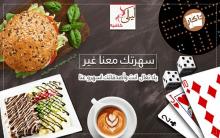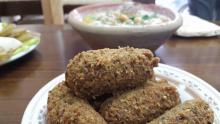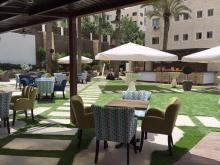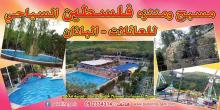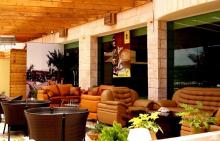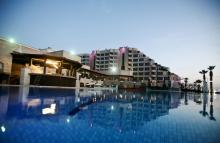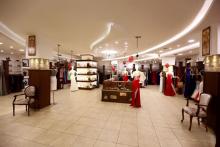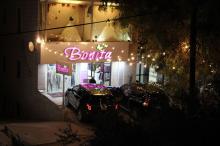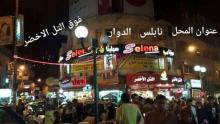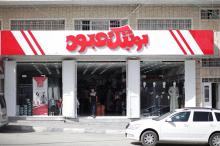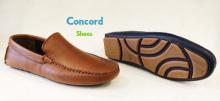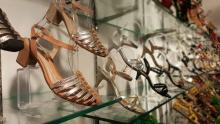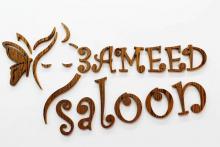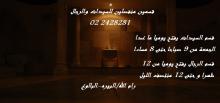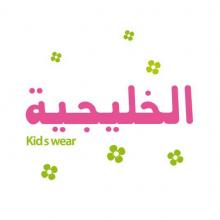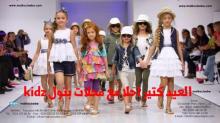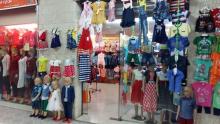يسرنا في مركز خليل السكاكيني الثقافي دعوتكم لافتتاح المعرض الثاني من سلسلة عروض "أحفوريات الرغبة: صروح بلا دولة"، وذلك في كراج المركز المركز يوم السبت 6.5.2017 في تمام الساعة 6:30 مساء ويستمر إلى يوم الخميس1.6.2017.
We are delighted at Khalil Sakikini Cultural Centre to invite for the opening of the second exhibition of the series of exhibitions "Desires into Fossils: Monuments without a State" at the centre's garage on the 6th, May, 2017 at 6:30pm and continues until Thursday 1/6/2017.
*************************************************************
"سأدع الغبار يتراكم"
بكريّة مواسي ورؤوف حاج يحيى
عمل تركيبيّ بحثيّ
نصوص، فيديو، صور فوتوغرافيّة، ومواد بحث متنوّعة
٢٠١٧ (مشروع مستمرّ)
يترافق غرز النّصب التّذكاريّة داخل الخطّ الأخضر مع سلسلة من القرارات الشّعبيّة والإجراءات السّلطويّة في مراحل تاريخيّة متقطّعة. يسعى هذا المعرض إلى تقديم بحث يقوم بتمييز الخطوط الخارجيّة لأشكال النّصب التّذكاريّة هذه وإلى النّبش عن ملابسات تشييدها زمنيًّا وعلاقتها بالذّاكرة المتراكمة والمنعطفات السّياسيّة في الميادين.
يتجوّلان بكريّة مواسي ورؤوف حاج يحيى بين مجموعة صروح متغايرة تمّ تشييدها في محطّات مفصليّة داخل الخطّ الأخضر، كالنّصب التّذكاريّ ليوم الأرض في سخنين ونصب أخرى شُيّدت كردود على أحداث في هذه المناطق. يعود البحث إلى قبور ومزارات الأولياء كمرجع للمقارنة الجماليّة مع صروح حداثيّة وطقوس الالتفاف حولها؛ ويتّسع بحثهما ليشمل أسئلة تدور حول المحيط الذي صمّم الخطاب السّائد، فيعرضان مواد بصريّة توثّق انخراط العامل «العربيّ» في العمل في المستعمرات الإسرائيليّة بالإضافة إلى منشورات صادرة عن مؤسّسات حزبيّة.
يحمل النّصب التّذكاريّ، إجمالًا، عبء ماضٍ لا يمضي في حال سبيله، والآن نجده غير قادر على النّطق بذلك العبء؛ تلتقط هذه المُشَيَّدَات نصيبها من الغبار اليوميّ فيستولي عليها الشّحوب معظم أيّام السّنة لتزهو كومضات على رزنامة الذّكرى فقط. يبدو للزّائر الذي تنبّهه كثافة التّفاصيل أنّ وظيفة هذه الكتل هي رصد الرّتابة والاكتئاب المزمنَين النّاجمين عن وضع قائم غير قابل للتّغيير، كأنّما عيشٌ في برزخ بين الانكباب على ممارسة الحاضر وبين الاطّلاع على سيرورة الوقت.
*********
رؤوف حاج يحيى:
(مواليد طيبة المثلّث)، فنّان وباحث في تاريخ الفنون البصريّة المعاصرة. حصل على شهادة البكالوريوس في علم الاجتماع من جامعة بير زيت عام ٢٠٠٣، يدرس حاليًّا في برنامج الدّراسات العليا في قسم تاريخ الفن في جامعة تل أبيب. من بين مشاريعه الفنيّة: «غباش» (٢٠٠٥)، «غزّة إكسبرس» (٢٠٠٦)، «متر مربّع» (٢٠٠٩) و«حكايات العم دايتون» (٢٠١٢).
بكريّة مواسي
(مواليد ١٩٨٧، باقة الغربيّة)، درست اللّسانيّات وتاريخ الفنّ في الجامعة العبريّة في القدس. شاركت في العديد من المنشورات النّصيّة والتّعاونيّات الثّقافيّة. بالإضافة إلى مزاولتها التّرجمة وعملها في مجال اللّسانيّات المحوسبة، تهتمّ بكريّة بالتّصوير الفوتوغرافيّ ممارسة وبحثًا.
***************
Bekriah Mawasi & Raouf Haj Yihya
I’ll let it gather dust
Research Installation
Texts, video, photographs, and various research material
2017 - Ongoing
As commemorative monuments dot the territory inside the Green Line, the act of their implanting is closely associated with a series of popular decisions and political procedures over the past decades. This exhibition attempts to present material from a research that looks into the aesthetics of these monuments, and uncovers the conditions under which they were built, their relationship to the collective memory and the political turns and twists of the public squares.
Bekriah and Raouf examine a group of monuments that were erected at key historical moments inside the Green Line. One of which is the Land Day commemorative monument in Sakhneen built by the Land Day Committee in 1976, in addition to other monuments that were built in response to events in these territories. They also explore different aesthetic forms of commemorative structures, such as religious mausoleums and shrines dating to the ottoman era as a way to contrast the modernist forms of monuments and their rituals. The research expands to include questions in relation to the environment that produced the prevailing political discourse, and thus the exhibition includes visual material that documents the assimilation of the “Arab” worker in the construction of Israeli settlements, in addition to publications released by political parties.
Often, the commemorative monument carries the burden of a past that hasn’t died yet, and now we find it unable to speak of this burden. These structures amass the everyday dust and fade into the time only to reappear as a glimmer on the day of commemoration. To a wary visitor, these masses function as the observers of stillness and chronic depression created by the status quo that is currently in a limbo. As if they live in an isthmus, between their devotion to the present and their watching of the passing of time.
Raouf Haj Yihya:
(Born in Tayybet Almuthalath) is an artist and researcher. He received his BA in Sociology at Birzeit University in 2003, and is currently finishing his MA in Art History at Tel Aviv University. Some of his artworks are: Penumbra (2005), Gaza Express (2006), Square Meter (2009), and Stories of Uncle Dayton (2012).
Bekriah Mawasi:
(Born 1987, Baqa Algharbiyyeh) is a writer and researcher. She acquired her BA in Semiotics and Art History at the Hebrew University in Jerusalem. Mawasi has contributed to various collective projects and publications. She is the co-founder of the collective translation platform; Mudam. Bekriah’s interest is focused on photography, both in its practice and theory.
***************
عن المشروع الكلي:
أحفوريات الرغبة: صروح بلا دولة
تقييم ريم الشلة ولارا الخالدي
بمشاركة الفنانين (حسب التتالي الزمني للمعارض):
نور أبو عرفة، رؤوف حاج يحيى وبكرية مواسي، بينجي بوياجيان وبهزاد خوسرافي، كيسي أسبروث-جاكسون
يخاطب هذا المشروع التّوتّر الّذي يثيره النّصب التّذكاريّ في فلسطين. نشهد مؤخّرًا على تحوّلات في الحكاية الوطنيّة وتمثيلاتها في المادة والتّجسيدات المختلفة. كيف يتمّ نقل هذه التّناقضات إلى الحيّز العامّ؟ تنبثق نظرتنا للمسألة من سبر السرديات ذات الطّابع الانعتاقيّ والمتغيّرة، بالإضافة إلى كشف رغبات سياسيّة معيّنة تجد لها مأوى في النّصب التّذكاريّ. يبدو أنّ تجمُّد هذه الرّغبات في النّصب التّذكاريّ يطرح حلولًا ونهايات لمسائل وأحداث تاريخيّة سياسيّة، مع ذلك، ليس بإمكانها الفرار من مواجهة حساسيّتها المفرطة تجاه تناقضاتها الذّاتيّة.
تتخّذ الكثير من الأعمال المشاركة في المشروع هيئة البحث الفنّيّ الذّي ينقّب في مواضيع ملموسة تدور حول هذه التّساؤلات؛ نادرًا ما يكون للأعمال هيئة البحث المتمَّم، ولكنّه ينجلي للزّائر من خلال عرض مواد بحث الفنانين على مدة خمسة أشهر متتالية. تلي هذه المرحلة سلسلة أخرى تعرض فيها أعمال فنية للفنانين السنة القادمة (2018).
يتطرّق المشروع الّذي تقدّمه نور أبو عرفة إلى المأزق النّاجم عن مواجهة السّرد الجماعيّ - الّذي يولّده المتحف كمؤسّسة - لذاكرة الفرد الّذي تعرّض للصّدمة؛ بينما يهتمّان بكريّة مواسي ورؤوف حاج يحيى باتّخاذ منحى مقارن يبحث في تشييد الذّاكرة حول أحداث عينيّة في التّاريخ الفلسطينيّ؛ بنجي بوياجيان وبهزاد خسرفي يطالعان عمليّة الانهيار الدّاخليّ من خلال البحث الدّقيق متعدّد المجالات حول النّصب التّذكاريّ لفلسطين في طهران؛ يتتبّع كيسي أسبروث-جاكسون مسار شخصيّات ثوريّة خُصّصت لها مشاريع نصب تذكاريّة وقد نُزعت من تربة موطنها الأصليّ واستولى عليها التّقارب السّياسيّ.
سيرافق سلسلة معارض الأبحاث برنامج صوتيّ مسجّل يشارك فيه مفكّرون وفنّانون يعرضون تساؤلات حول مفهوم الصروح في سياقات مختلفة. وسيتوفّر هذا الأرشيف على موقع ساوندكلاود خاصّ بالمشروع يتمّ إطلاقه بعد المعرض الأوّل من السّلسلة.
المشروع بدعم من مؤسسة عبد المحسن القطان
*****
About the project:
Desires into Fossils: Monuments without a State
A series of research exhibitions curated by Reem Shilleh and Lara Khaldi, prompted by the works of artists Noor Abu Arafeh, Bekriah Mawasi and Raouf Hajyahia, Benji Boyadgian and Behzad Khosravi, and Casey Asprooth-Jackson.
Desires into Fossils addresses the tension prompted by monuments in and about Palestine. Recently we have been witnessing shifts in the national narrative and its representations via images and embodiments. In what way are these contradictions transmitted to the public domain? Our perspective stems from looking at the changing emancipatory narratives and the capturing of certain political desires which nest in monuments. The congealment of these desires through monuments seem to resolve political issues and histories, however they cannot escape the vulnerability to their own contradictions.
Many of the artworks will take the form of artistic research into concrete cases around these questions, often not taking the form of finished work, but rather unfolding through exhibiting research material over different temporal installments. This phase will be followed by a second one where art works will be presented in 2018.
Noor Abu Arafeh’s project addresses the standoff between the forging of a collective narrative by the institution of the museum and the memory of a traumatised individual; while Bekriah Mawasi and Raouf Hajyahia undertake a comparative approach towards the construction of memory around particular events in Palestinian history; Benji Boyadgian and Behzad Khosravi are concerned with the process of implosion through the meticulous multidisciplinary research on the Palestine monument in Tehran; Casey Asprooth-Jackson follows a trajectory of revolutionary figures as monument projects dislocated from their national soil and appropriated by political affinity
The series of research exhibitions will be accompanied by an audio recorded public programme with other practitioners and artists who explore questions around monumentality. This archive will live on a soundcloud account and will be launched shortly after the first exhibition.
The Project is supported by A.M. Qattan Foundation


